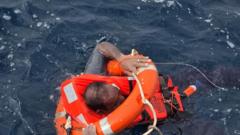As plans for a cable car to the peak of Monemvasia surface, the community is torn between enhancing accessibility for those with mobility challenges and preserving the site's historical integrity.
Cable Car Controversy in Monemvasia: Balancing Accessibility and Heritage

Cable Car Controversy in Monemvasia: Balancing Accessibility and Heritage
The proposed cable car in Greece's medieval Monemvasia sparks debate over accessibility versus heritage preservation.
The picturesque medieval fortress town of Monemvasia, perched on a massive rock along the Myrtoan Sea in southern Greece, has long been revered for its Byzantine churches and charming cobblestone streets. Established in the 6th century, it attracts thousands of tourists each year, drawn by its rich history and breathtaking scenery. However, a proposed development is stirring controversy among locals and visitors alike.
Authorities have put forward a plan to construct a cable car to the summit of the rock, promising to make the breathtaking 12th-century church—situated at the top—more accessible, particularly for individuals with limited mobility. The project, which is set to be funded by a grant from the European Union worth nearly $7 million, aims to alleviate the challenging trek up a winding 240-yard stone path that can be steep and daunting.
Despite the potential benefits, opposition has surfaced from cultural preservation advocates and local residents. Detractors argue that a cable car would threaten the historical essence of Monemvasia, potentially compromising its protected status. Legal challenges are already in motion as several community members express concern that the project could disrupt the town's tranquil character and its value as a cultural landmark.
Proponents advocate for the cable car as a necessary step to enhance tourism and provide access to the stunning views atop Monemvasia, arguing that it could boost the local economy by attracting more visitors. With passionate voices on both sides, the debate continues on how best to honor both the historical significance and the accessibility needs of this captivating site. The outcome may very well shape the future of Monemvasia and its delicate balance between preservation and modernization.






















